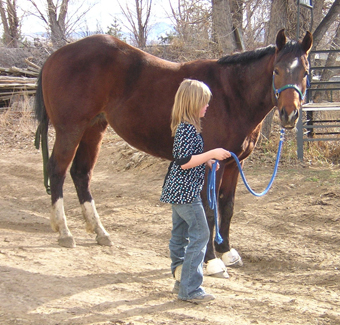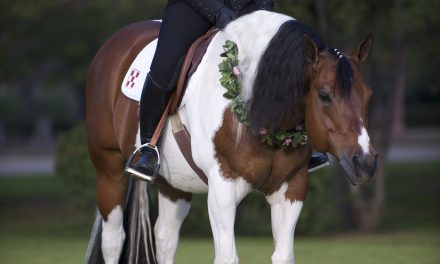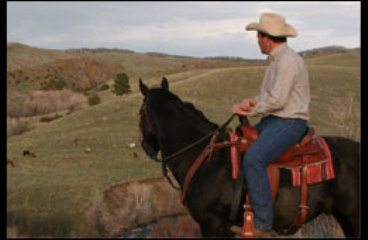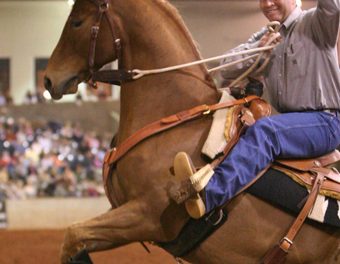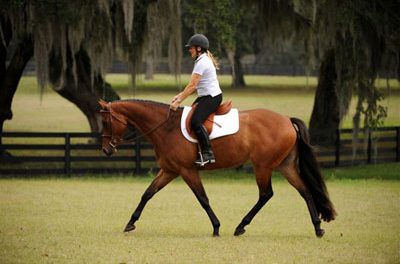 How much confidence do you have in your horse? Will you take him anywhere, or do you avoid some situations because you are afraid you will not be able to control him? This month, I will discuss three important things you should be able to do with your horse. Being able to do these things with your horse will help increase your trust in him and give you the confidence to put him in new situations.
How much confidence do you have in your horse? Will you take him anywhere, or do you avoid some situations because you are afraid you will not be able to control him? This month, I will discuss three important things you should be able to do with your horse. Being able to do these things with your horse will help increase your trust in him and give you the confidence to put him in new situations.
1 – Leading Your Horse
Your horse should stand quietly next to you when you’re holding his lead line. What should you do if he doesn’t stand still? Stand with your horse beside you on a loose lead line. If he starts to move around, send him off around you in a circle at the trot. Have him go around you a few times, and then ask him to stop. Give him the opportunity to stand next to you again. If he fidgets again, send him off again.
Do not grab the lead line right at the snap under the horse’s chin and try to physically hang on to him. Your horse weighs a lot more than you do, and there is no way that you can physically stop him from moving if he wants to.
You are not trying to make him sweat and tire him out. You are building his respect for you and your confidence in him by focusing on what you can do rather than what you can’t do.
When you’re leading your horse, he should walk beside you. You shouldn’t be dragging your horse along behind you, nor should your horse get ahead of you and drag you along. If your horse drags along behind you, use the tail of your lead rope to tap him on the hip and drive him forward. If he is getting ahead of you, stop him and back him up every time he passes your shoulder. If he gets crooked and evasive during these exercises, you can walk with a fence on his outside to help him understand that he needs to stay straight and listen to your cues.
2 – Stopping Your Horse
You should be able to stop your horse with one rein, not two.
First, make sure your horse can easily bend his head and neck when you ask. Pick up on one rein and your horse should respond by bending his nose in the direction of the pressure. For example, if you pick up the right rein, he should turn his head to the right. Practice this on both sides.
Then make sure your horse move will move his hindquarters over. When you pick up on one rein and the horse bends his nose in the direction of pressure, use your leg on that same side to ask him to move his hindquarters. For example, when you pick up the right rein so he turns his head to the right, use your right leg against his side to ask him to move his hindquarters over. In this case, the hindquarters should move over to the left. As he steps, his right hind foot should cross in front of his left hind foot.
Practice the one-rein stop at all speeds, including the trot, lope, gallop, and run. At faster speeds you will need to circle more slowly so you don’t flip your horse as you bring his speed down. Also, be sure to practice in both directions.
3 – Riding at Different Speeds
Many people have never let their horse open up under saddle. Find an enclosed arena where you will be safe and have enough room. Ask your horse for some speed. Practice speeding him up and then slowing him back down. Practice this until you feel confident that he will stop for you from a gallop.
About the Author
Ken McNabb grew up on a cattle ranch and is a life-long horseman, as well as a popular trainer and clinician, whose methods are based on his work with John Lyons and his own experiences with horses. Ken is known as being a master communicator who helps both horse and rider become the best they can be. Ken is regularly featured on RFD-TV. Visit Ken’s website at www.kenmcnabb.com.

